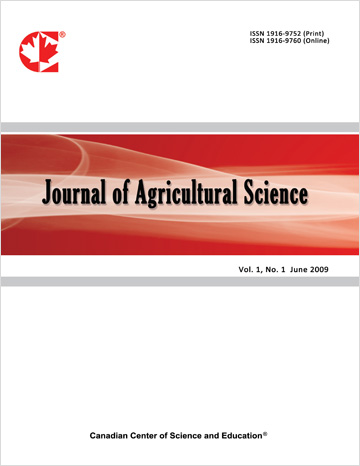Characterization of Protein and Oil in Winter-Hardy Faba Bean (Vicia faba L.) Grown in Virginia (USA)
- Harbans L. Bhardwaj
Abstract
We had previously reported that faba bean (Vicia faba L.) has considerable potential as an alternate winter food legume crop in the eastern USA to supply green immature seeds. Current study was conducted to characterize protein quality of mature faba bean seed. We determined concentrations of protein and oil in mature seeds of two winter-hardy faba bean breeding lines. Two faba bean lines (VSX-BL and VSX-BH) were planted in the field in November 2022 and mature pods were harvested in July 2023. The mean values for protein and oil concentrations were 23.4 and 1.42 percent, respectively. The mean values for Alanine, Arginine, Aspartic acid, Glutamic acid, Cystine, Glycine, Histidine, Isoleucine, Lysine, Phenylalanine, Proline, Serine, Threonine, Total Lysine, Tyrosine, Valine, Methionine, and Tryptophan were 1.02, 2.00, 2.58, 3.92, 0.25, 1.04, 0.62, 0.98, 1.79, 1.03, 1.00, 1.17, 0.86, 1.64, 0.59, 1.11, 0.19, and 0.23 percent, respectively. The mean values for saturated, poly- and mono-unsaturated fatty acids were 0.32, 0.64, and 0.38 percent, respectively. The two winter-hardy lines had significantly different concentrations of several amino acids but variation for fatty acids was not significantly different. Concentrations of oil, protein, amino acids, and fatty acids in our studies were intermediate between soybean and pea seeds. Based on challenges with soybean and pea seeds, we conclude that faba bean seeds produced in Virginia provide a potential source of plant proteins.
- Full Text:
 PDF
PDF
- DOI:10.5539/jas.v17n8p43
Journal Metrics
- h-index: 67
- i10-index: 839
- WJCI (2023): 0.884
- WJCI Impact Factor (2023): 0.196
Index
- AGRICOLA
- AGRIS
- BASE (Bielefeld Academic Search Engine)
- Berkeley Library
- CAB Abstracts
- ChronosHub
- CiteSeerx
- CNKI Scholar
- Copyright Clearance Center
- CrossRef
- DESY Publication Database
- DTU Library
- e-Library
- EBSCOhost
- EconPapers
- Elektronische Zeitschriftenbibliothek (EZB)
- EuroPub Database
- Excellence in Research for Australia (ERA)
- Google Scholar
- Harvard Library
- IDEAS
- iDiscover
- Jisc Library Hub Discover
- JournalTOCs
- KindCongress
- LIVIVO (ZB MED)
- LOCKSS
- Max Planck Institutes
- Mendeley
- MIAR
- Mir@bel
- NLM Catalog PubMed
- Norwegian Centre for Research Data (NSD)
- Open J-Gate
- OUCI
- PKP Open Archives Harvester
- Polska Bibliografia Naukowa
- Qualis/CAPES
- RefSeek
- RePEc
- ROAD
- ScienceOpen
- Scilit
- SCiNiTO
- Semantic Scholar
- SHERPA/RoMEO
- Southwest-German Union Catalogue
- Standard Periodical Directory
- Stanford Libraries
- SUDOC
- Swisscovery
- Technische Informationsbibliothek (TIB)
- Trove
- UCR Library
- Ulrich's
- UniCat
- Universe Digital Library
- WorldCat
- WRLC Catalog
- Zeitschriften Daten Bank (ZDB)
Contact
- Anne BrownEditorial Assistant
- jas@ccsenet.org
